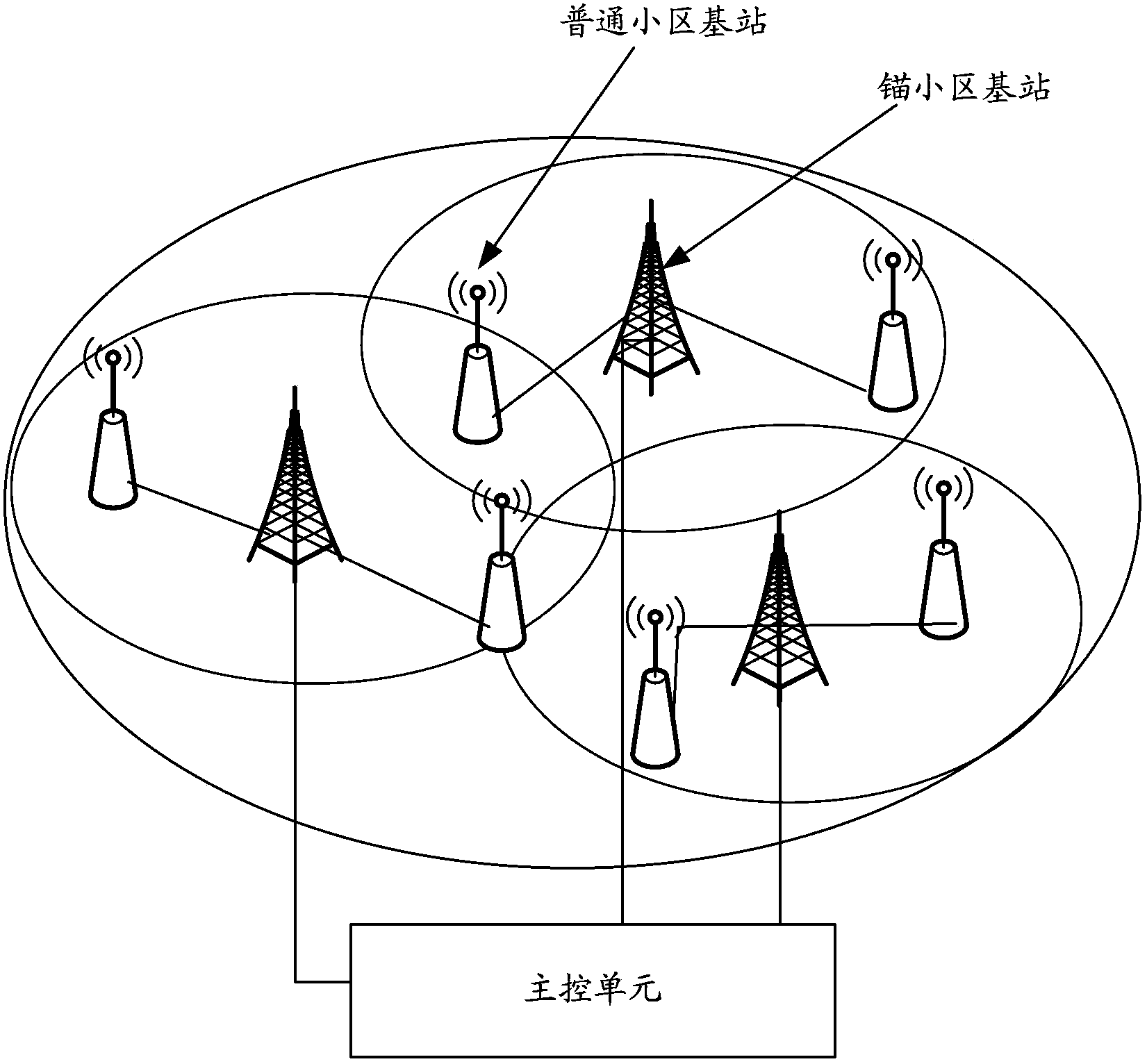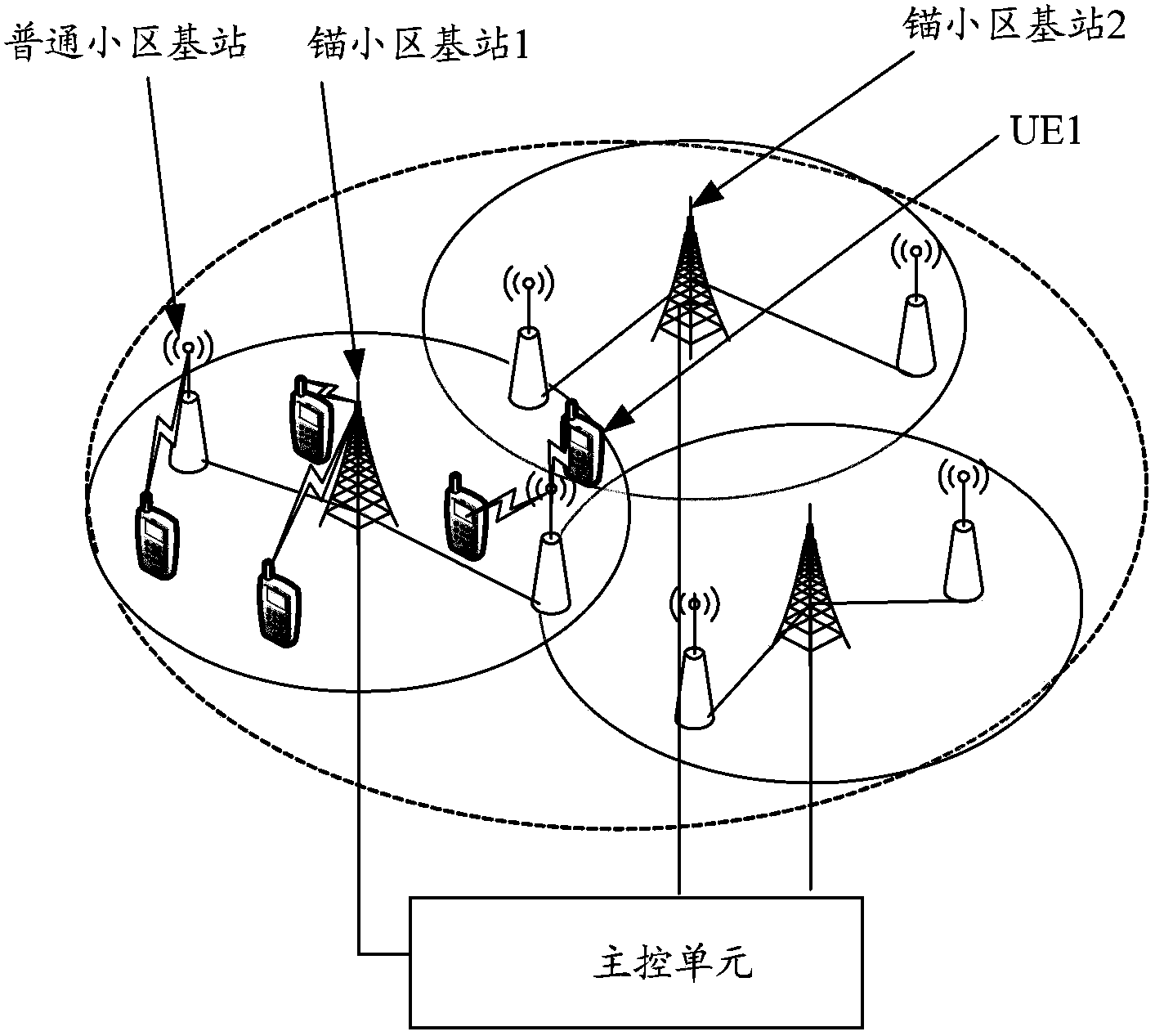Cell architecture, layout, working method and device
A cell and anchor cell technology, applied in the network field, can solve the problems of terminal service interruption, inability to meet the continuous access of the terminal, and taking a long time to achieve the effect of saving energy consumption, avoiding interruption, and satisfying continuous access.
- Summary
- Abstract
- Description
- Claims
- Application Information
AI Technical Summary
Problems solved by technology
Method used
Image
Examples
example 1
[0114] image 3 It is a schematic diagram of the terminal initial access method in Example 1 of the present invention; Figure 4 It is a schematic diagram of the final access mode of the terminal in Example 1 of the present invention.
[0115] A. If image 3 As shown, the anchor cell base station 1 and its subordinate common cell base stations serve many terminals, and the load is relatively large;
[0116] By obtaining the load information of each anchor cell base station and the ordinary cell base stations subordinate to each anchor cell base station, the main control unit learns that the anchor cell base station 1 and its subordinate ordinary cell base stations have relatively large loads, and the anchor cell base station 1 adjacent to the anchor cell base station The load of the anchor cell base station 2 is relatively small;
[0117] B. If Figure 4 As shown, the main control unit performs load balancing among cell base stations, and switches UE1 to anchor cell base s...
example 2
[0119] Figure 5 It is a schematic diagram of the terminal initial access method in Example 2 of the present invention; Image 6 It is a schematic diagram of the final access mode of the terminal in Example 2 of the present invention.
[0120] A. If Figure 5 As shown, UE1 and UE2 are respectively connected to two different common cell base stations under the management of anchor cell base station 1 and anchor cell base station 2;
[0121] UE1 and UE2 are scheduled to the same resource block (RB, Resource Block), so there is serious co-channel interference;
[0122] B. If Image 6 As shown, the main control unit learns the existing interference by obtaining the interference information on each carrier of each anchor cell base station and the common cell base station subordinate to each anchor cell base station, and performs interference coordination between the cell base stations; respectively UE1 and UE2 Scheduling to different RBs, thereby reducing or even eliminating in...
PUM
 Login to View More
Login to View More Abstract
Description
Claims
Application Information
 Login to View More
Login to View More - R&D
- Intellectual Property
- Life Sciences
- Materials
- Tech Scout
- Unparalleled Data Quality
- Higher Quality Content
- 60% Fewer Hallucinations
Browse by: Latest US Patents, China's latest patents, Technical Efficacy Thesaurus, Application Domain, Technology Topic, Popular Technical Reports.
© 2025 PatSnap. All rights reserved.Legal|Privacy policy|Modern Slavery Act Transparency Statement|Sitemap|About US| Contact US: help@patsnap.com



